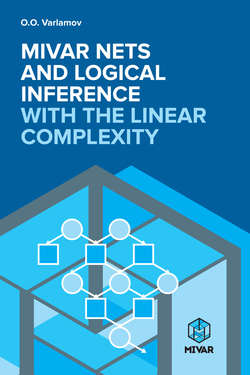Читать книгу Mivar NETs and logical inference with the linear complexity - Олег Варламов - Страница 3
Analyses of paradigms and models of information processing
ОглавлениеTraditionally, there exist the following paradigms and models of data processing: propositional calculus, predicate calculus, productions, semantic nets, Petri nets, ontology, and others. Production approach has important advantages. D.A. Pospelov wrote that the knowledge about the world can have double nature:
1) can contain the description of facts and events of the world that fix their presence or absence, and main relations and regularities containing these facts and events;
2) can contain procedural descriptions of how these facts and events should be manipulated and different goals of the system should be achieved [23].
Productions are generally described as “IF… THEN…”. Some specialists in intellectual systems believe that the description of knowledge in the form of productions is universal: all the knowledge can be described in this form. Different rules, procedures, formulas or services can be represented in the system of productions. In fact, all causal statements can be reduced to productions. So, the use of production approach for the logic and computational processing of different data is reasonable and efficient.
To solve various practical problems in the sphere of computer sciences databases (storage) and logical computational data processing is required. Historically, the areas of logic inference and computational processing have been developing independently and successfully solved problems of various classes. To some extent, there existed a contradiction between these two approaches [2, 3, 4, 10-17, 23-32]. In addition, the problems of processing and storage of the data were divided.
Databases were used to store and to search required data, systems of logic inference – to process the information. In a result, these two domains hardly intersected, although there were quite a lot of propositions to unite all the functions of data storage and processing in the single system [4, 10, 23-32].
The MIVAR approach allows to unify in the single formalism both data storage (in the MIVAR information space – database) and processing (in the MIVAR logical-computing nets).
The MIVAR approach allows solving various scientific and practical problems. First, let’s make an analysis of previously existed approaches and estimate their limits. Then, we’ll move to the analyses of problems, achievements and perspectives in the domain of databases and the MIVAR information space of unified representation of data and rules.
